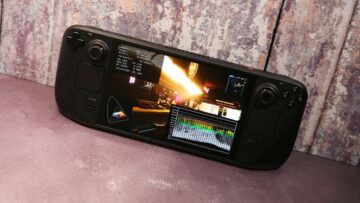As the launch of a next gen platform draws near, it’s inevitable that more CPUs find their way into the wild. An early performance analysis of a Core i9 13900K has surfaced from Chinese user Extreme Player on bilibili (opens in new tab). This isn’t some cryptic tweet, but a full benchmark analysis across a range of gaming titles. The video compares Intel’s Core i9 12900KF with a qualification sample Core i9 13900K. It’s important to bear in mind that we’re still many weeks out from the launch, and performance is subject to change.
The 13900K is an evolutionary upgrade over the 12900K (opens in new tab). Its major differentiating features appear to be the additional eight E cores and higher clocks. With the additional E cores, the 13900K is a 24-core/32-thread processor. There are some other improvements (opens in new tab) including faster DDR5 memory support and cache size increases. It appears as though dedicated PCIe 5.0 M.2 lanes are missing though. Specifics will have to wait until the embargo lifts.
Extreme Player tested the 13900K across eight games, plus 3DMark, with additional testing to measure peak power consumption. The test system is a good one for CPU testing. A high end MSI RTX 3090 Ti (opens in new tab) and Team DDR5-6400 (opens in new tab) are good choices for minimising bottlenecks, allowing the potential of the CPUs to come to the fore.
I’ve taken the liberty of pulling some screenshots from Extreme Player’s video (opens in new tab). All credit goes to him, with thanks.
Beginning with the 3DMark results, we see the extra E cores deliver superior physics scores, as expected. Extreme Player only shows the CPU and overall results. There aren’t any graphics tests but it’s a safe assumption that the 13900K isn’t boosting 3DMark graphics performance. Not that it’s really relevant to gamers.
What is relevant are the gaming tests. The 1080p results are where we can expect to see the biggest differences between the 12th and 13th Gen CPUs. From what I can see (without properly calculating) at 1080p there’s about a 4 to 5% performance uplift. The minimum numbers look better. If I ignore the RDR2 and PUBG results, a gain of around 10% looks pretty good.
Moving to 1440p and 4K, the load moves increasingly onto the GPU, with low single digit FPS gains. The minimum FPS numbers still show a good gain over those of the 12900KF though. We also don’t know the specifics of the game settings so it’s difficult to put too much emphasis on these early results.
Your next upgrade
It looks like the 13900K’s gains could come down to clock speeds more than anything architectural. The extra E cores will benefit apps that can make use of them, but when it comes to gaming, the fact that the CPU doesn’t have anywhere near as much importance as a GPU holds true.
Finally, there are the peak power consumption readings. Here the results show the 13900K to potentially pull a lot more power than the 12900KF. These are peak results though. Average long duration power consumption is likely to be lower, but still, power consumption is shaping up as a key characteristic. And not in a good way.
Once again, it’s important to note that there’s still many weeks to go before the launch. The final retail silicon may offer slightly different performance and the BIOS of the Asus motherboard will certainly have some optimising left to do. An immature BIOS can significantly affect performance results, particularly when it comes to the correct application of the PL1 and PL2 limits, and resulting turbo boost clocks and duration. Take these results with the customary pinch of salt. Nevertheless, it’s a good tease!










